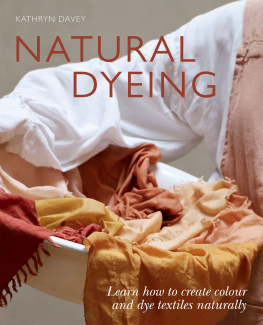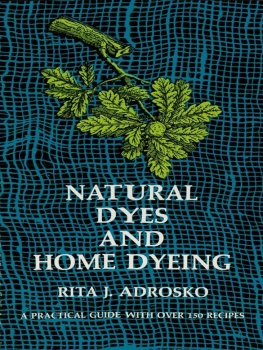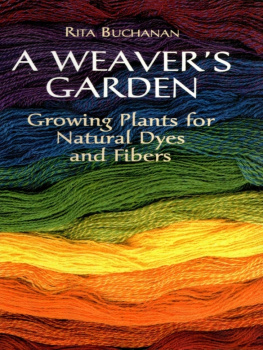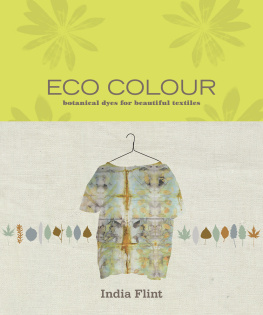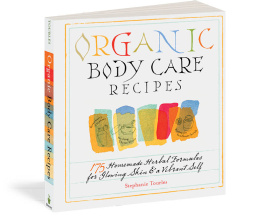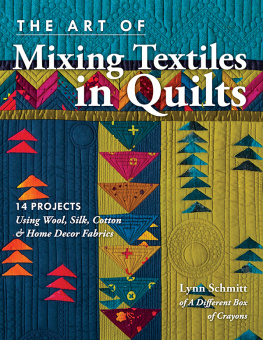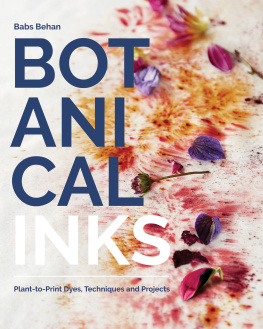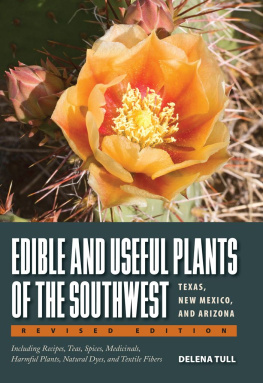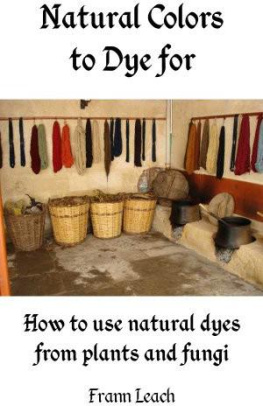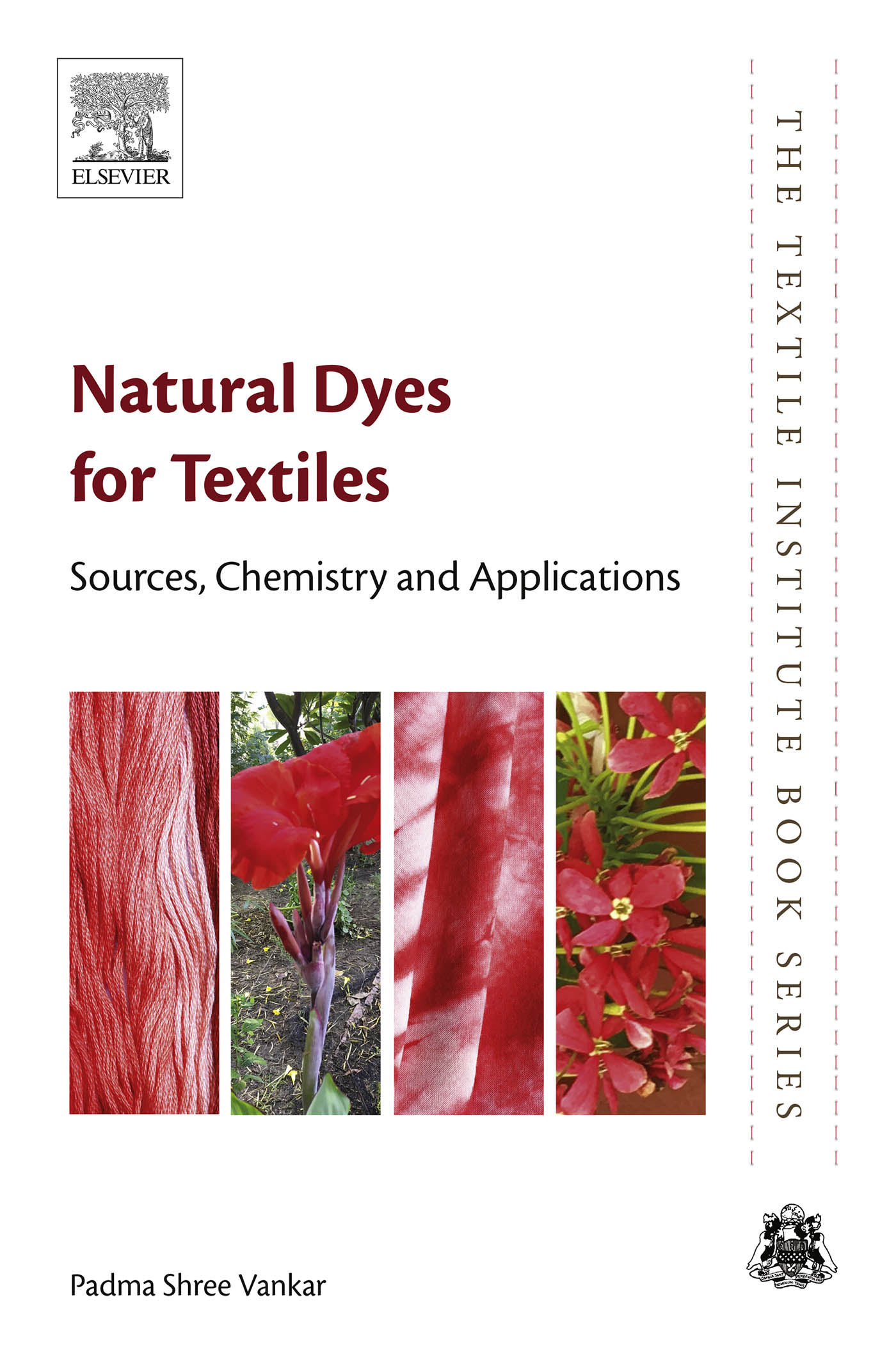Natural Dyes for Textiles
Sources, Chemistry and Applications
First Edition
Padma Shree Vankar

Copyright
Woodhead Publishing is an imprint of Elsevier
The Officers Mess Business Centre, Royston Road, Duxford, CB22 4QH, United Kingdom
50 Hampshire Street, 5th Floor, Cambridge, MA 02139, United States
The Boulevard, Langford Lane, Kidlington, OX5 1GB, United Kingdom
2017 Elsevier Ltd. All rights reserved.
No part of this publication may be reproduced or transmitted in any form or by any means, electronic or mechanical, including photocopying, recording, or any information storage and retrieval system, without permission in writing from the publisher. Details on how to seek permission, further information about the Publishers permissions policies and our arrangements with organizations such as the Copyright Clearance Center and the Copyright Licensing Agency, can be found at our website: www.elsevier.com/permissions.
This book and the individual contributions contained in it are protected under copyright by the Publisher (other than as may be noted herein).
Notices
Knowledge and best practice in this field are constantly changing. As new research and experience broaden our understanding, changes in research methods, professional practices, or medical treatment may become necessary.
Practitioners and researchers must always rely on their own experience and knowledge in evaluating and using any information, methods, compounds, or experiments described herein. In using such information or methods they should be mindful of their own safety and the safety of others, including parties for whom they have a professional responsibility.
To the fullest extent of the law, neither the Publisher nor the authors, contributors, or editors, assume any liability for any injury and/or damage to persons or property as a matter of products liability, negligence or otherwise, or from any use or operation of any methods, products, instructions, or ideas contained in the material herein.
Library of Congress Cataloging-in-Publication Data
A catalog record for this book is available from the Library of Congress
British Library Cataloguing-in-Publication Data
A catalogue record for this book is available from the British Library
ISBN: 978-0-08-101274-1 (print)
ISBN: 978-0-08-101884-2 (online)
For information on all Woodhead publications visit our website at https://www.elsevier.com/books-and-journals

Publisher: Matthew Deans
Acquisition Editor: David Jackson
Editorial Project Manager: Edward Payne
Senior Production Project Manager: Priya Kumaraguruparan
Cover Designer: Vicky Pearson Esser
Typeset by SPi Global, India
1A
Newer natural dyes for cotton
P.S. Vankar FEAT (Facility for Ecological and Analytical Testing), Kanpur Kalyanpur, India
Abstract
The quality of life on Earth is linked inextricably to the overall quality of the environment. In early times, it is believed that human race can use an unlimited abundance of land and resources. But rapid industrialization and technological advancements have resulted in severe environmental pollution. This is true for textile dyeing as well. The textile dyeing industry now seems to be a big pollution. But now, both consumers and producers are turning toward eco-friendly textiles and clothing. As the demand of such eco-friendly fabric is increasing, there exist great scopes for newer dye sources from new natural dyes. In the following text, many newer natural dye sources are discussed. These natural dye sources are found very suitable for cotton fabric.
Keywords
Environment; Pollution; Dyeing industry; Eco-friendly textiles; Natural dye; Cotton fabric
Introduction
In India with its diversity of climatic zones and altitudes, geographic variety has resulted in a rich biodiversity that has gifted flora and fauna, which yields an array of dye-producing shrubs and perennials. The ancient people exclusively used dyestuffs of vegetables, minerals, and animal origin, all easily obtained in their own vicinity. In India, it was widely used for coloring of fabrics and other materials. In order to meet the growing demand for natural colorants, new pigment crops are being sought. The newer sources need to be tapped. However, for some sources such as Al root ( Morinda tinctoria ), manjistha, safflower, and indigo, there is an organized cultivation because of their exceptional and established versatility. Increased acreage is devoted to Al root and safflower cultivation purely because of their dye qualities. More plants need to be considered as agronomically viable plantations.
Natural dyes are basically elements of natural resources, and these dyes are generally classified as plant, animal, mineral, and microbial dyes based on their source of origin, although plants are the major sources of natural dyes. Natural dyes per se are sustainable as they are renewable and biodegradable. The experience with natural dyeing has given an insight to explore plants in the neighborhood. Finding fiber colors in plants that grow easily and fast has lead into a new world of fiber colors that give exotic shades. These natural colors have richness and luster that synthetics can never attain. It has become a common misconception that natural dyes only produce beiges and browns and other washed out shades. In reality, vibrant, fast natural colors can be produced, which are comparable with and often surpass the colors of synthetics. Apart from the sources of these dyes, it is perhaps the commitment of those propagating them and the near clinical efficiency with which dye is extracted, produced, and used, which is responsible for the unique nature of natural dyeing and producing stable coloration.
Experimental trials were carried out in domestic gardens in collaboration with botanists mainly focusing on the best conditions for the growth of dye plants in regard to soil and climatic factors. Modern cultivation system for getting maximal dye yields including optimal seeding and harvesting time and optimal fertilization procedures was adapted. The utilizable plant parts were subjected to specific dehydration processes, or the dyestuff was extracted as per the given strategy.
It will help in giving an idea about feasibility of providing high-quality natural dyes from plants, creating new opportunities for both farmers and fabric industryin line with the current consumer trends toward ethnic fabric and natural products. Several newer sources of natural dyes particularly for dyeing cotton and silk fabrics to get a gamut of colors have been explored. This will increase the availability of newer shades and new choices of fabric dyed with natural dyes.
The aim is to show feasibility of providing high-quality natural dyes from plants, creating new opportunities for both farmers and the fabric industryin line with the current consumer trends toward ethnic fabric and natural eco-friendly products.
Many new plant sources have been explored for natural dyeing, and the following section is a brief introduction of the plants used from our screening experience. Many of them are known medicinal plants and have been shown to have potentially rich natural colorant content as well. It is imperative to make a documentation of these plants for the future use of these plants as sources of natural dyes.


